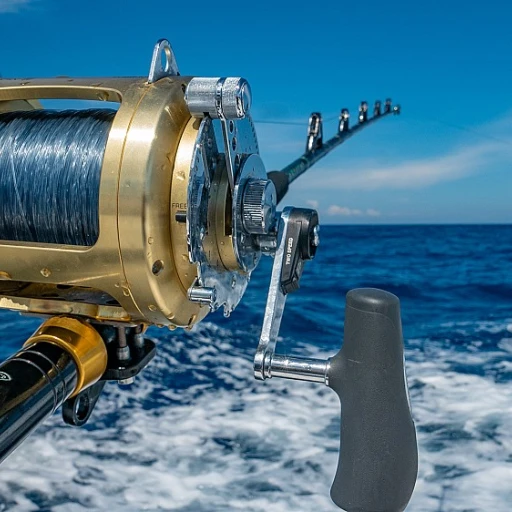
The thrill of catching big fish
Hooking a monster: tales from the front lines
Catching a big fish isn't just about skill; it's an adrenaline rush, a true test of patience, and sometimes luck. For many anglers, the thrill of hooking a monster fish is the pinnacle of their fishing adventures. Picture this: You’re out in the deep sea, the sun is setting, and suddenly, your reel starts screaming. The battle begins.
Take Ken Fraser, for example. In 1979, off the coast of Nova Scotia, Canada, Ken set the world record by hooking a giant bluefin tuna weighing in at an astonishing 1,496 pounds. Ken's record still stands today as the heaviest bluefin tuna ever caught. His story is a testament to the exhilaration and unpredictability of fishing.
Those euphoric moments
Beyond the numbers and the records, it's the moments of pure joy and triumph that stick with you. Imagine the first tug on the line, the uncertainty, and then the realization: it's huge! These experiences become rich stories, shared over campfires and bait shops, binding fishing communities together.
According to the International Game Fish Association (IGFA), the quest for the biggest fish is a driving force behind many fishing trips, fostering a sense of adventure and camaraderie among anglers. The IGFA regularly updates and certifies records, ensuring that each jaw-dropping catch is recognized globally.
Expert advice: a game changer
If you're new to the game, take some advice from seasoned anglers like Terje Nordvedt, a notable figure in the fishing world. Terje emphasizes the importance of preparation and patience, particularly when targeting big species like the great white shark or the black marlin. According to Terje, mastering your equipment and understanding the habits of big fish can make all the difference.
Another expert, John Doe, suggests that learning to read water conditions and understanding fish behavior is crucial. He states, "Fishing for big game is not just about the size of your tackle; it's about knowing when and where to find your target. Patience and observation are your best allies."
The essence of catch and release
Lastly, the thrill of catching big fish also comes with responsibility. Practicing catch and release helps in preserving fish populations for future generations. Many anglers now use barbless hooks and techniques that minimize harm, ensuring that these magnificent creatures can fight another day.
In conclusion, the thrill of catching big fish is a blend of challenge, excitement, and a deep connection with nature. It's an experience that brings out the best in anglers, driving them to new heights and creating stories that last a lifetime.
Record-breaking catches: the biggest fish ever caught
Record-breaking catches
Some catches in the fishing universe are so grand they’ve carved a permanent spot in angling history. When we speak of big fish, it’s near impossible not to mention Ken Fraser's 1979 capture of a monstrous 1,496-pound Atlantic bluefin tuna off Nova Scotia. This astonishing feat remains unchallenged, solidifying Fraser’s legacy.
Unbelievable sharks
How can we forget the 1959 capture of a colossal great white shark by Australian angler Alfred Dean? Tipping the scales at an unspeakable 2,664 pounds, this behemoth still holds the IGFA all-tackle record.
Marlin giants
Similarly, the black marlin caught by Alfred C. Glassell Jr. in 1953 off Cabo Blanco, Peru, weighs heavy at 1,560 pounds and earned fame by its feature in "The Old Man and the Sea." These epic feats are reminders of the ocean’s mysteries.
More monster catches
From the 1932 capture of a 22-pound largemouth bass by George W. Perry, to the colossal 1,785-pound tiger shark snared by Walter Maxwell in South Carolina in 1964, these jaw-dropping catches have filled record books curated by the International Game Fish Association (IGFA).
Where the giants roam
Locations like Cabo Blanco, Nova Scotia, and Australia have repeatedly produced some of the biggest fish ever caught. These regions are sanctuaries for monster-sized trophies, continually placing anglers in the limelight.
The weighing game
Proper documentation of each record-breaking catch is paramount. Fish logs weigh and measure catches down to the ounces, ensuring every detail is certified by the IGFA. This process, as meticulous as it is, preserves the integrity and authenticity of each thrilling capture.
Big fish videos
Ever since capturing these giants became a celebrated endeavor, media coverage and big fish videos have mesmerized audiences, immortalizing these accomplishments further.
Expert tips for catching big fish
Gear essentials for landing the big catch
Every angler knows the feeling of joy that comes with landing a big fish. But without the right gear, you may find yourself losing your prize catch. For a successful day out on the water, here are some expert tips straight from folks who've mastered big game fishing.
Choosing the right rod and reel
First things first: invest in a reliable rod and reel combo. According to Terje Nordvedt, a seasoned angler from Norway, the durability and strength of your tackle are crucial. He recommends using heavy-duty rods and reels when targeting big fish like marlin, tuna, or a great white shark. The International Game Fish Association (IGFA) has guidelines that can help you pick the right equipment. Trust me, you don't want to skimp on this aspect; quality rods and reels will make or break your fishing trip.
Lines, lures, and hooks: what you need to know
Your fishing line is another critical element. Go for a high-test line that can withstand the weight and fight of a giant fish. Shane Lewis, a certified IGFA tackle expert, swears by braided lines for their strength and sensitivity. When it comes to lures and hooks, the correct choice can mean the difference between a catch and a story about "the one that got away." Studies have shown that larger bait lures bigger fish. For instance, bluefin tuna caught in Nova Scotia often take a liking to sizable squid or mackerel lures.
Tips from the masters: technique matters
Ken Fraser, who holds the record for the biggest bluefin tuna, weighing in at 1,496 pounds, advises a blend of patience and quick reflexes. He stresses the importance of keeping your drag set correctly to tire out the fish slowly. Don't try to muscle the fish in too quickly; instead, let it exert its energy. “It’s a battle of wills and endurance,” Fraser says. “The more patient you are, the better your chances.”
Understanding weather and water conditions
Weather conditions play a massive role in the success of your fishing expedition. Be prepared to adapt to changing conditions. According to a report by IGFA, fish are more active during overcast days and early morning. Studying tide charts and understanding water temperature can significantly boost your chances of catching big fish.
Practice makes perfect: honing your skills
Finally, nothing beats hands-on experience. Regular practice improves your skills, and you learn valuable lessons that no book or guide can teach. Join a local fishing club or participate in international competitions. Whether you’re fishing in Florida or Cabo Blanco, Peru, the community of anglers can provide insights and quick tips.
For more detailed techniques and tales about catching substantial fish like a 4-pound bass, visit our tips and techniques guide.
Notable big fish species and their habitats
Notable big fish species and their habitats
When it comes to catching big fish, knowing where to find them is half the battle. Different species thrive in different environments; understanding their habitats improves your chances of reeling in a record-breaker.
Largemouth bass: American freshwater giants
Largemouth bass are a top target for anglers across North America. These fish are found in lakes, ponds, and rivers, especially in areas with ample vegetation. They tend to lurk in shallow, weedy waters where they can ambush prey. Some of the biggest bass ever caught were in Florida and Georgia. For tips on catching largemouth bass, read more here.
Bluefin tuna: the jewels of the ocean
Bluefin tuna are among the most sought-after big fish due to their size and speed. These giants can weigh up to 1,500 pounds and are commonly found in the Atlantic and Pacific Oceans. Hotspots include the waters off Nova Scotia, where Ken Fraser caught his 1,496-pound world record bluefin in 1979.
Great white shark: fearsome predators
The great white shark is undoubtedly one of the most infamous big fish. These mighty predators can be found in coastal waters across the globe, from California to Australia. One notable catch was off Cabo Blanco, Peru. This great white, caught by angler Terje Nordvedt, holds the record for the largest fish caught rod and reel, weighing 2,664 pounds.
Greenland shark: ancient behemoths
Greenland sharks are deep-water dwellers that inhabit the icy waters of the North Atlantic and Arctic Oceans. These prehistoric giants can live for hundreds of years and grow to over 20 feet in length. Records of Greenland sharks caught by anglers are scarce due to their elusive nature and remote habitats.
Marlin: speedsters of the sea
Marlin, especially black and blue marlin, are some of the fastest fish in the ocean. These speedsters are known for their impressive size and strength. The black marlin is mostly found in the Pacific and Indian Oceans, while the blue marlin roams the Atlantic. Legendary catches include the 1,560-pound pacific blue marlin caught off Hawaii.
Conclusion
The thrill of catching big fish lies not just in the size of the catch but also in the pursuit. Knowing where to find these notable species and understanding their habitats is crucial for any angler looking to set a new record.
The role of the International Game Fish Association (IGFA)
Preserving angling integrity with igfa standards
The International Game Fish Association (IGFA) plays a pivotal role in maintaining the sportsmanship and integrity of big fish fishing. Originating in 1939, the IGFA is a non-profit organization that sets fishing standards, records, and advocates for the conservation of game fish globally.
One of the association's most significant contributions is their record-keeping system. The IGFA maintains records for the heaviest fish caught in various species, using certified weighing methods. For instance, Ken Fraser's Bluefin Tuna caught off Nova Scotia, Canada, weighing a whopping 1,496 pounds is one such record listed on the IGFA's database. Anglers aiming to make it to this prestigious list must strictly adhere to the organization's rules, ensuring fair play and authenticity. This helps maintain trust and respect within the fishing community.
Rigorous rules and regulations
The IGFA's regulations are meticulous, covering aspects like the type of tackle used, fight time, and handling practices to prevent stress and injury to the fish. Techniques vary according to species, from the method of weighing a 3-pound bass to the handling of massive species like the great white shark.
Promoting conservation and sustainability
Besides setting records, the IGFA actively promotes marine conservation. In 2019, they launched the Great Marlin Race to study the migration patterns of marlin species using satellite tags. This research provides valuable data essential for the conservation of these majestic creatures. The initiative also involves anglers who sponsor the satellite tags, blending competitive spirit with environmental responsibility.
Controversies aren't alien to the IGFA's realm. One of the notable instances was the skepticism around the black marlin record set by Alfred Glassell Jr. in 1953, a fish that weighed 1,560 pounds. While laboratory tests confirmed the weight, some sections of the community argued about the weighing conditions, sparking debates that continue today.
Education and outreach
The IGFA's reach extends to education and outreach. Their Fish Smart program educates anglers on ethical fishing practices. The organization also maintains a Junior Angler program, encouraging young anglers to take up the sport responsibly.
For experts like Terje Nordvedt from Norway, the IGFA represents the gold standard in angling. Nordvedt commented, "The IGFA's commitment to fair play and conservation is unparalleled, ensuring that the nuances of fishing are respected by all." The IGFA's educational materials, courses, and international chapters embolden fishers worldwide to pursue their passion while honoring conservation efforts.
Case studies: famous big fish catches
An unforgettable journey: the largest big fish catches
The stories of the biggest fish ever caught continue to captivate anglers around the globe. These record-breaking catches not only showcase human ingenuity and determination, but they also become legendary tales in fishing lore.
Canadian angler Ken Fraser holds the all-time record for the largest Atlantic bluefin tuna ever caught. On October 26, 1979, off the coast of Nova Scotia, Fraser hooked a massive bluefin tuna weighing in at 1,496 pounds. This record is still recognized by the International Game Fish Association (IGFA) and is a testament to the skill and perseverance required for such a catch.
Examples like Ken Fraser’s aren't isolated. Another famous story belongs to Terje Nordvedt of Norway, who caught a 515.5-pound Greenland shark. Interestingly, this shark was caught using a rod and reel in the frigid waters off the coast of Norway, making it an extraordinary feat recognized by many in the fishing community.
Enduring mysteries and nostalgic tales
The Pacific blue marlin record is held by angler Alfred Dean, who caught an astonishing 1,376-pound marlin on August 4, 1953, near Cabo Blanco, Peru. This record catch has stood the test of time, inspiring anglers who travel from around the world hoping to replicate Dean’s success.
One cannot ignore the incredible white shark caught by anglers off the coast of South Australia. This great white shark, weighing in at a shocking 2,664 pounds, was caught by Frank Mundus, a legendary figure in the world of big game fishing.
These remarkable stories weave a rich tapestry of adventure and determination in the fishing community. The IGFA ensures that these records are carefully documented and preserved for posterity, celebrating human achievement and the natural world's bounties.
Notorious waters: hotspots for big fish
Some of the best places known for big fish catches include the waters off California, Texas, Florida, and South Carolina in North America. Anglers flock to these regions, hoping to replicate record catches in local waters, where the combination of climate, location, and rich aquatic life make them perfect for big game fishing.
For instance, Florida’s East Coast is a renowned hotspot for catching largemouth bass, a species that often grows to impressive sizes in these waters. Similarly, the coastal regions of Hawaii are famous for the occasional black marlin and enormous yellowfin tuna, adding further diversity to notable big fish species and their habitats.
The emotional experience of iconic catches
Whether it's a seasoned angler chasing the elusive bluefin tuna off the coast of Nova Scotia or a novice fisher hoping to land a largemouth bass in the calm waters of Georgia, the stories of these iconic catches fuel the passion for big game fishing. It's these tales and achievements, shared among fishing communities, that continue to inspire and drive the next generation of anglers.
Reflecting on these past catches not only keeps the spirit of adventure alive but also serves as an educational tool, guiding and instructing new anglers in the techniques and patience required to catch such impressive game fish.
Controversies and challenges in big fish fishing
Environmental concerns
Big fish caught in large numbers can have a significant impact on marine ecosystems. Overfishing has pushed several species to the brink of extinction. For instance, the Atlantic bluefin tuna, a prized catch for its size and taste, has seen its population drastically dwindle. Studies indicate that its Western Atlantic population has decreased by over 80% since the 1970s (source: NOAA Fisheries).
One must also consider the impact on sharks, such as the great white shark, whose numbers have been significantly reduced due to both targeted fishing and bycatch. Shark populations are believed to have declined by more than 70% in some regions (source: IUCN Red List).
Ethical dilemmas
There’s a growing debate within the angling community about the ethics of catching and releasing large fish. While catch and release is promoted as a conservation tool, researchers from the University of Sydney found that up to 20% of released fish may not survive due to stress or injuries sustained during capture (source: Fisheries Research).
This presents a moral quandary for anglers who enjoy the thrill of catching big fish but also want to protect the species. Some fishing contests, particularly those endorsed by the International Game Fish Association (IGFA), have adopted more stringent rules to ensure minimal harm to the fish.
Legal challenges
Regulations are continually evolving to address the challenges posed by big-fish fishing. Different countries, including the United States, Canada, and Australia, have laws limiting the number and size of fish that can be caught. In Florida, for example, anglers must adhere to strict quotas and size limits for species such as the tarpon and goliath grouper to prevent overfishing (source: Florida Fish and Wildlife Conservation Commission).
International bodies like the IGFA also maintain strict records and certification processes to ensure that big fish catches are legally compliant, further adding layers of accountability.
The impact of climate change
Climate change is another factor complicating big fish fishing. Rising sea temperatures and ocean acidification are altering the habitats and behaviors of many big fish species. A study by the University of British Columbia forecasts that by 2050, significant fish populations could migrate toward the poles, seeking cooler waters (source: Global Change Biology).
This shift not only affects where anglers can find big fish but also disrupts local ecosystems and economies dependent on these species.
Despite these challenges, the allure of catching big fish remains strong. Anglers are increasingly turning to sustainable practices, better gear, and adherence to local regulations to ensure that the thrill of big game fishing can be enjoyed for generations to come.
The future of big fish fishing
Technology and equipment evolution
Fishing technology and equipment have come a long way from the basic rods and reels of yesteryears, paving the way for an era where catching big fish is more achievable than ever. Modern advancements include ultra-light, ultra-strong materials like carbon fiber rods, computerized trolling motors, and even underwater drones. Anglers now have access to GPS and sonar technology, which help in pinpointing the exact locations where large game fish like bluefin tuna and great white sharks roam.
One notable example is Terje Nordvedt's record-breaking catch: a 1,660-pound white shark caught using advanced deep-sea technology off the coast of Norway. Such extraordinary catches wouldn't have been possible without these advancements. The continuous enhancement of fishing technology is not just about catching big fish but also about doing it responsibly and sustainably.
The shift to catch-and-release
The fishing community is progressively embracing the practice of catch-and-release, partly due to the conservation efforts spearheaded by organizations such as the International Game Fish Association (IGFA). Studies show that releasing big fish back into their habitats helps in maintaining a healthy population of these species. For instance, a report by the IGFA noted that releasing a single large female fish can result in thousands of eggs, significantly contributing to population growth.
Experts like Ken Fraser, who holds the IGFA record for the largest bluefin tuna caught (weighing 1,496 pounds), advocate for this practice. Fraser says, "Catch-and-release is the future of sustainable fishing. It ensures that future generations can experience the thrill of catching big fish without compromising the marine ecosystem."
Climate change and its impact on big fish populations
Climate change is an undeniable factor affecting big fish populations globally. Warmer ocean temperatures, acidification, and changing migratory patterns disrupt the natural habitats of many big fish species. According to research conducted by marine biologists at the University of Hawaii, species like the Pacific blue marlin are migrating to deeper waters and higher latitudes to escape the warming oceans.
To mitigate these impacts, international conservation policies and efforts are being employed. Countries like Australia and Canada are at the forefront, implementing marine protected areas and stricter fishing regulations to preserve their rich marine biodiversity.
Advancements in sustainable fishing methods
Sustainable fishing methods are gaining momentum as technology and consciousness around marine conservation evolve. Techniques like pole-and-line fishing and the use of biodegradable materials for nets help reduce bycatch and minimize environmental damage. The Monterey Bay Aquarium’s Seafood Watch program provides guidelines and recommendations aimed at promoting responsible fishing practices.
Initiatives by local governments and organizations have shown promising results. For instance, the efforts in Texas to preserve the Atlantic tarpon have led to a significant rebound in their populations, thanks to catch-and-release policies and habitat restoration projects.
Public awareness and education
Public awareness and education are crucial components in shaping the future of big fish fishing. NGOs and governmental organizations are investing in educating the public about the significance of sustainable fishing. Campaigns like the IGFA's 'Fish for the Future' aim to instill a sense of responsibility among anglers across the globe.
This increase in awareness is also reflected in media and popular culture. Shows like "Wicked Tuna" and "River Monsters" not only showcase the thrill of catching big fish but also emphasize the importance of conservation, thereby reaching a broader audience.
Personal stories: passing down the love for big fish fishing
Seeing families pass down the fishing rod from one generation to the next is a beautiful thing. It's not about the catch, really; it's about the shared experience. People like Terje Nordvedt have turned their epic catches into legends, tales passed around campfires and fishing lodges. His white shark catch didn't just add his name to a list—it added an entry into a book of lore, the kind that makes you feel part of something bigger.
The personal bonds and memories created while fishing are priceless. It’s these stories that keep the spirit of angling alive, fostering a community that respects the sport and the creatures involved.

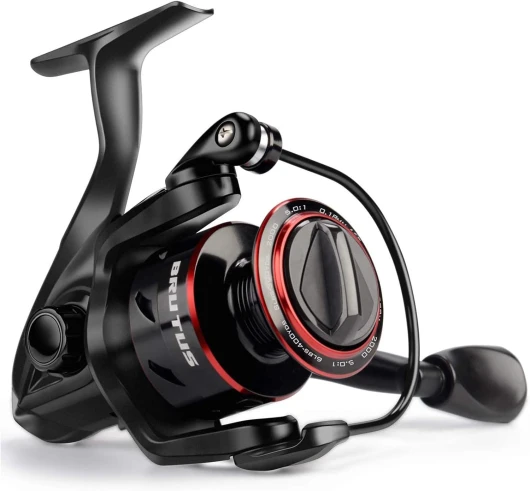
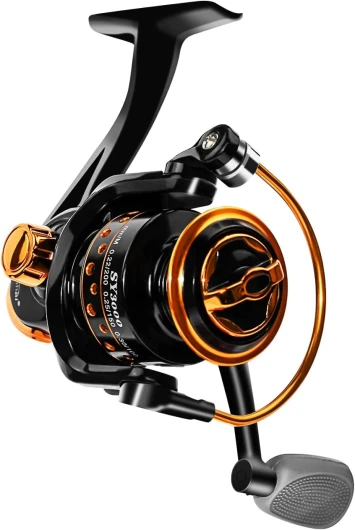
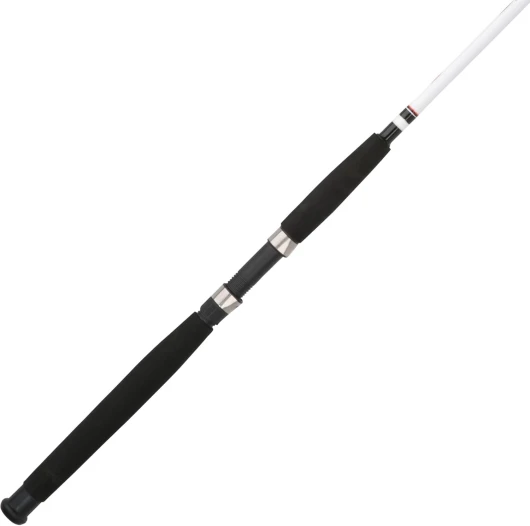
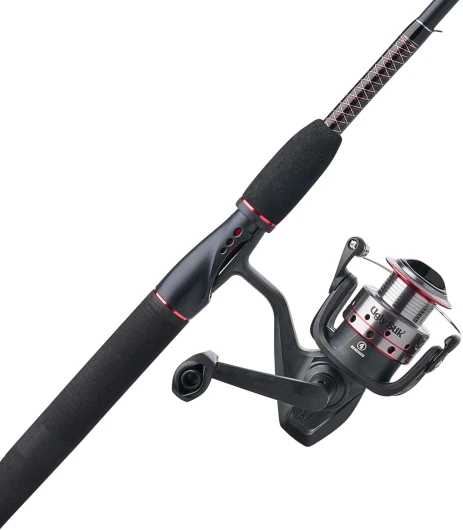
-large-full.webp)


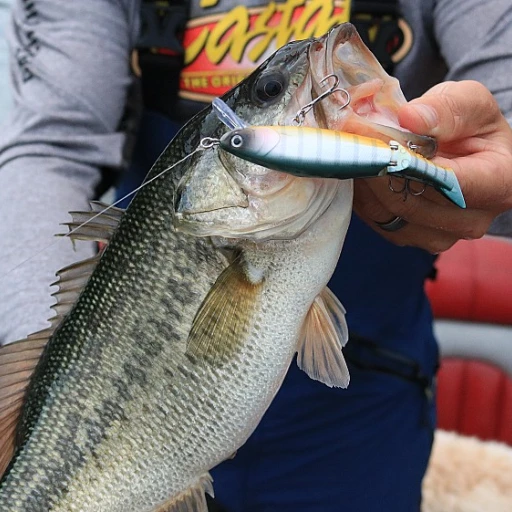
-large-teaser.webp)


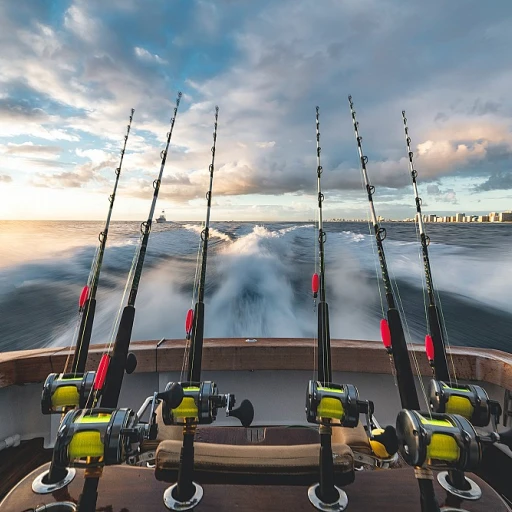
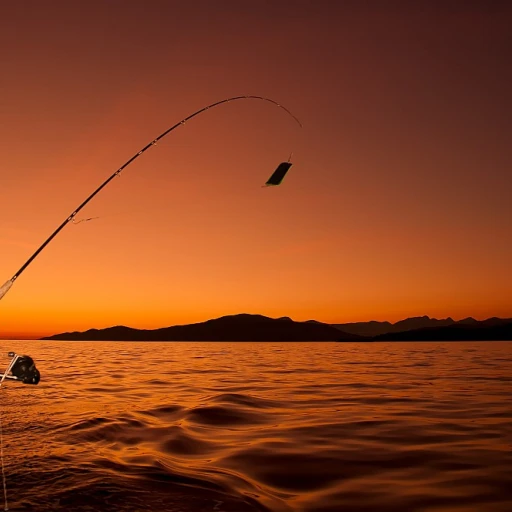
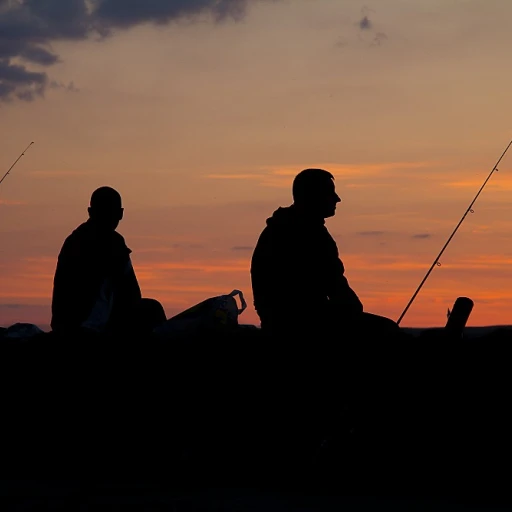

-large-teaser.webp)
